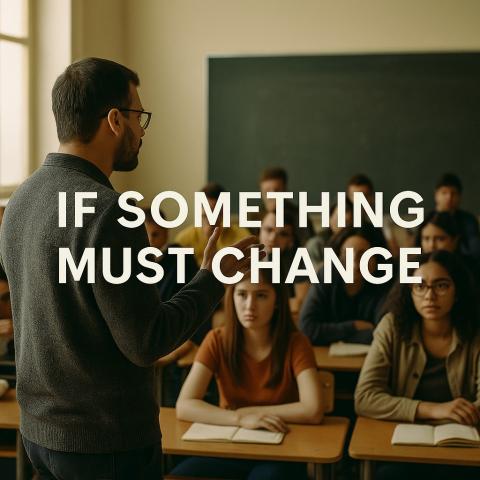
If Something Must Change
It was one of those unusually quiet days on campus. The corridors were half-empty, only a few students had shown up, and most faculty were on leave. In one of the scheduled classes, students from different sections were seated together. The atmosphere was lacklustre—some were eating, some drifting into sleep, a few deep in conversation, some stood up to acknowledge the teacher, while others wandered aimlessly around the room. It took nearly 15 minutes to bring some semblance of order.
But the bigger concern wasn't the disorder—it was the look on their faces. A shared sense of disengagement. Fatigue. A kind of quiet resignation that hung heavy in the room. The facilitator asked them all to stand and form a semi-circle. A simple question was posed: “Why does everyone seem so disheartened?”
A few students responded, voicing their frustration. Some said they felt uninspired. A few pointed to the lack of academic culture in the institution.
“But isn’t this a circular argument?” the facilitator asked. “Everyone finds someone else to blame.”
They reminded the group that the institution they were part of ranked among the top 1% in the country. “What you’re experiencing here isn’t specific to this campus,” they said. “This is how much of India’s higher education landscape looks today.”
The conversation went deeper. It was acknowledged that in most institutions, students struggle to find even one or two teachers who genuinely inspire them. The rest often becomes a mechanical routine of classes, assignments, and exams—with little connection or meaning.
The facilitator then shared a personal reflection—without naming themselves. They spoke of having studied in a system where, after Grade 8, they barely encountered a teacher. Where education was reduced to passing exams, and attending regular classes was a luxury.
It was only during a professional teaching degree that they first experienced what real classrooms could be. Later, they realised this wasn’t unique. This was how education functioned for large sections of India—especially for the poor and the marginalised.
“But should that be a reason to keep blaming the system?” they asked.
Instead, they offered a different perspective: What if each of us saw this as a chance to break the chain?
Even if the system is failing, each moment in a classroom can be reclaimed. Each interaction can carry the possibility of renewal. Each teacher, each student can choose to show up—not just physically, but with attention, care, and a desire to learn or inspire.
The room grew quieter—not with silence, but with thought. Perhaps this is how change begins. Not in sweeping policy shifts or grand declarations. But in small acts of resistance. In choosing to care when apathy seems easier. In choosing to show up fully even when the system doesn’t. Maybe that’s where the story starts again—on a slow, ordinary morning, in a half-empty classroom, when someone dares to ask: What if we did it differently?
- Log in to post comments
